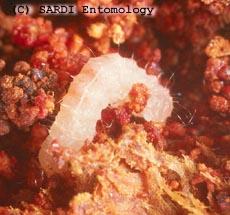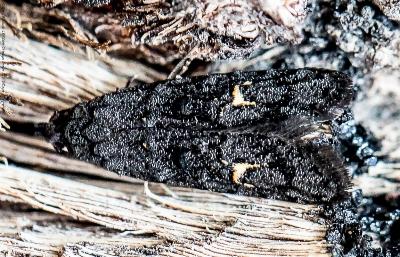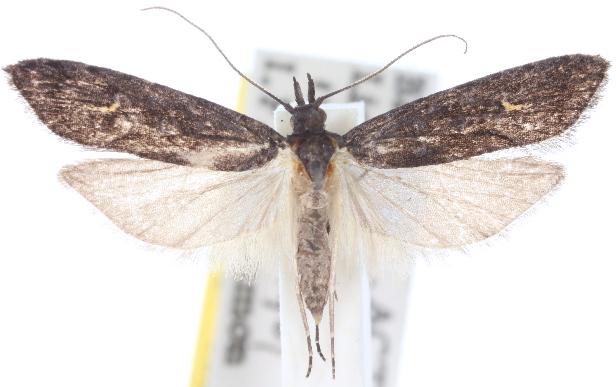
| CARPOSINIDAE, COPROMORPHOIDEA | (donherbisonevans@yahoo.com) and Stella Crossley |

(Photo: courtesy of the
South Australian Research and Development Institute)

| CARPOSINIDAE, COPROMORPHOIDEA | (donherbisonevans@yahoo.com) and Stella Crossley |

(Photo: courtesy of the
South Australian Research and Development Institute)
This Caterpillar has been found boring into galls on the stems of :
The Caterpillar is white with a brown head.

The adult moth has black forewings, each with a small pale comma mark near the middle. The hindwings are either grey or orange. It has a wingspan of about 2.5 cms.

The species occurs in

Further reading :
Ian F.B. Common,
Moths of Australia,
Melbourne University Press, 1990, fig. 29.18, p. 318.
Edward Meyrick,
Exotic Microlepidoptera,
Volume 2 (1920), p. 339.
Edward Newman,
Characters of a few Australian Lepidoptera, Collected by Mr. Thomas R. Oxley,
Transactions of the Entomological Society of London,
New Series, Volume III, Number 8 (1856), p. 289.
 caterpillar |  butterflies |  Lepidoptera |  moths |  caterpillar |
(updated 27 April 2009, 16 June 2025)